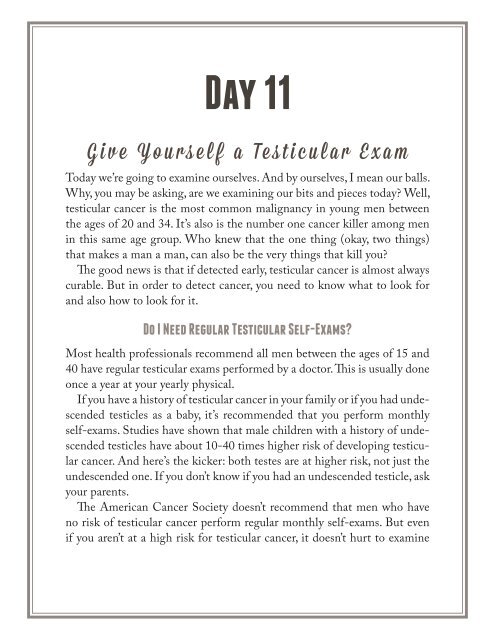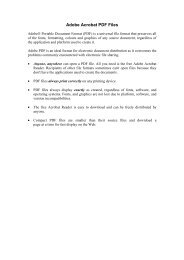588b1c58c8a68278cfc285551
Create successful ePaper yourself
Turn your PDF publications into a flip-book with our unique Google optimized e-Paper software.
Day 11<br />
Give Yourself a Testicular Exam<br />
Today we’re going to examine ourselves. And by ourselves, I mean our balls.<br />
Why, you may be asking, are we examining our bits and pieces today? Well,<br />
testicular cancer is the most common malignancy in young men between<br />
the ages of 20 and 34. It’s also is the number one cancer killer among men<br />
in this same age group. Who knew that the one thing (okay, two things)<br />
that makes a man a man, can also be the very things that kill you?<br />
The good news is that if detected early, testicular cancer is almost always<br />
curable. But in order to detect cancer, you need to know what to look for<br />
and also how to look for it.<br />
Do I Need Regular Testicular Self-Exams?<br />
Most health professionals recommend all men between the ages of 15 and<br />
40 have regular testicular exams performed by a doctor. This is usually done<br />
once a year at your yearly physical.<br />
If you have a history of testicular cancer in your family or if you had undescended<br />
testicles as a baby, it’s recommended that you perform monthly<br />
self-exams. Studies have shown that male children with a history of undescended<br />
testicles have about 10-40 times higher risk of developing testicular<br />
cancer. And here’s the kicker: both testes are at higher risk, not just the<br />
undescended one. If you don’t know if you had an undescended testicle, ask<br />
your parents.<br />
The American Cancer Society doesn’t recommend that men who have<br />
no risk of testicular cancer perform regular monthly self-exams. But even<br />
if you aren’t at a high risk for testicular cancer, it doesn’t hurt to examine


















